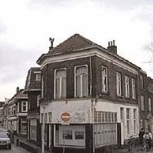
Arnhem
Arnhem is a city with two faces: Fine neighbourhoods with nice housing, high income and quality of environment on the one hand, and neighbourhoods with a concentration of social problems on the other. That includes large unemployment, poor housing, unsafety, drug abuse, dumped rubbish, high percentage of migrants, low incomeetc. Arnhem has especially been confronted with tendencies of social degeneration between 1975 and 2005.
The City of Arnhem is going through a period of economic stability at the moment. However, the economic policy is aiming to simulate three economic sectors in which the city has good development chances and where it expects to realise a continuing growth.This is :
• The creative industry [fashion and design];
• Energy and environmental technology [hydrogeneconomy];
• The health sector.
The [cultural] tourism sector also is a sector with a potential for further development.
